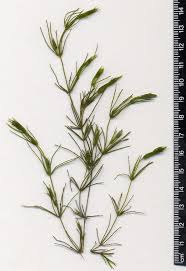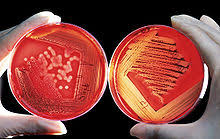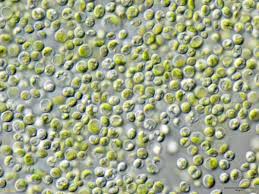plant kingdom MULTIPLE CHOICE QUESTION (MCQ)
(1) Fresh water forms (2) Marine water forms
(3) Terrestrial (4) Heterotrophic
2. Select the incorrect statement about artificial system of classification of Linnaeus.
(1) It is called artificial system because it is based on only one or two characters.
(2) It was based on androecium structure
(3) It is also called sexual system as he chiefly used characters of stamens.
(4) It divides flowering and non flowering plants into two categories.
3. Natural classification system considered natural affinities among organisms which means
(1) Natural similarity of resemblance among organisms
(2) Natural dissimilarities among organisms
(3) Phylogenetic similarities among organisms.
(4) Phylogenetic dissimilarities among organisms.
4. The protoplast of brown alga contains all except
(1) Plastids (2) Centrally located vacuole
5. Select the incorrect match
(1) Ectocarpus –Filamentus
(2) Kelps — Possess carotenoids
(3) Chlamydomonas — Cup shaped chloroplast
(4) — Colonial green alga
6. All of the algae mentioned in the options are used as food.
Select the pair of brown algae which are used as food.
(1) Porphyra Laminaria
(2) Laminaria Sargassum
(4) Sargassum Porphyra
7. A similarity between brown and red algae is
(1) Presence of motile gametes
(2) Their occurrence primarily in marine habitat
(3) Presence of polysulphate esters in outer cell wall.
8. Match the following columns and select the correct option regarding bryophytes.
(a) Gametophyte (i) Haploid, antherozoid producing structure
(b) Sporophyte (ii) Flask shaped haploid structure
(c) Anthredium (iii) Produces gametes
(d) Archegonium (iv) Non photosynthetic diploid body.
a b c d
(1) (iii) (iv) (ii) (i)
(2) (ii) (i) (iii) (iv)
(3) (iii) (iv) (i) (ii)
(4) (iv) (iii) (i) (ii)
9. Water is required for the transfer of male gametes to the mouth of archegoniumin all except
(1) Mosses (2) Liverworts
(3) Pteridophytes (4) Algae
10. State true (T) or False (F) for the given statements and select the correct option.
A. Pteridophytes may flourish well in sandy soil conditions
B. Pteridophytes grow in very limited and restricted geographical regions.
A B
(1) T F
(2) F T
(3) T T
(4) F F
11. All of the following statements hold true for both protonema and prothallus, except
(1) Free living gametophyte structures
(2) Formed from spore
(3) Photosynthetic in nature
(4) Branched and filamentous.
12. In mosses, the sex organs bearing stage is
(1) Protonema (2) Leafy stage
(3) Diploid plant (4) Prothallus
13. Gemmae are present in. [NEET 2021]
(1)Some Liverworts (2) Mosses
(3) Pteridophytes (4) Some Gymnosperms
14. Which of the following algae produce Carrageen? [NEET 2021 ]
(1) Blue green algae (2) Green algae
(3) Brown algae (4) Red algae
15. Which of the following algae contains mannitol as reserve food material? [NEET 2021]
(1) Ulothrix (2) Ectocarpus
(3) Gracilaria (4) Volvox
16. Genera like Selaginella and Salvinia produce two kinds of spore. Such plants are known as:
[NEET 2021]
(1) Heterosporous (2) Homosorus
(3) Heterosorus (4) Homosporous
17. Floridean starch has structure similar to[NEET 2020]
(1) Amylopectin and glycogen (2) Mannitol and algin
(3) Laminarin and cellulose (4) Starch and cellulose
18. Which of the following pairs is of unicellular algae? [NEET 2020]
(1) Gelidium and Gracilaria (2) Anabaena and Volvox
(3) Chlorella and Spirulina (4) Laminaria and Sargassum
19. Strobili or cones are found in [NEET 2020]
(1) Pteris (2) Marchantia
(3) Equisetum (4) Salvinia
20. The plant parts which consist of two generations one within the other [NEET 2020]
(a) Pollen grain insides the anther
(b) Germinated pollen grain with two male gametes
(c) Seed inside the fruit
(d) Embryo sac inside the ovule
(1) (a), (b) and (c) (2) (c) and (d)
(3) (a) and (d) (4) (a) only
21. Male and female gametophytes do not have an independent free living existence in:
[NEET 2020]
(1) Bryrophytes (2) Pteridophytes
(3) Algae (4) Angiosperms
22. Phycoerythrin is the major pigment in [NEET 2020]
(1) Brown algae (2) Red algae
(3) Blue green algae (4) Green algae
23. Which of the following statements is incorrect about gymnosperms. [NEET 2020]
(1) Their seeds are not covered
(2) They are heterosporous
(3) Male and female gametophytes are free living
(4) Most of them have narrow leaves with thick cuticle
24. From evolutionary point of view, retention of the female gametophyte with developing young embryo on the parent sporophyte for some time, is first observed in [NEET 2020]
(1) Liverworts (2) Mosses
(3) Pteridophytes (4) Gymnosperms
25. Which is wrongly matched? [NEET 2018]
(1) Uniflagellates gametes — Polysiphonia
(2) Biflagellate zoospores — Brown algae
(3) Unicellular organism— Chlorella
(4) Gemma cups— Marchantia
26. Winged pollen grains are present in [NEET 2018]
(1) Mustard (2) Cycas
(3) Pinus (4) Mango
27. Which of the following is correct? [NEET 2018]
(1) Ovules are not enclosed by overy wall in gymnosperms
(2) Selaginella is heterosporous, while Salvinia is homosporous
(3) Stems are usually unbranchedin both Cycas and Cedrus
(4) Horsetails are gymnosperms
28. Select the mismatch:
(1) Pinus — Dioecious
(2) Cycas — Dioecious
(3) Savinia — Heterosporous
(4) Equisetum — Homosporous
29. An example of colonial alga is [NEET 2017]
(1) Chlorella (2) Volvox
(3) Ulothrix (4) Spirogyra
30. Life cycle of Ectocarpus and Fucus respectively are [NEET 2017]
(1) Haplontic ,Diplontic
(2) Diplontic , Haplodiplontic
(3) Haplodipontic, Diplontic
(4) Haplodiplontic, Haplontic
31. Conifera are adapted to tolerate extreme environmental conditions because of
[NEET 2016]
(1) Broad hardy leaves (2) Superficial stomata
(3) Thick cuticle (4) Presence of vessels
32. Which one of the following statements is wrong? [NEET 2016]
(1) Algae increase the level of dissolved oxygen in the immediate environment
(2) Algin is obtained from red algae, and carrageenan from brown algae
(3) Agar-agar is obtained from Gelidium and Gracilaria
(4) Laminaria and Sargassum are used as food
33. Select the correct statement [NEET 2016]
(1) The leaves of gymnosperms are not well adapted to extreme of climate
(2) Gymnosperms are both homosporous and heterosporous
(3) Salvinia Ginkgo and pinus all are gymnosperms
(4) Sequoia is one of the tallest trees
34. Which one is wrong statement?
(1) Brown algae have chlorophyll a and c, and fucoxanthin
(2) Archegonia are found in Bryophyta, Pteridophyta and Gymnosperms
(3) Mucor has biflagellate zoospores
(4) Haploid endosperm is typical feature of gymnosperms
35. Read the following five statement (A to E) and select the option with all correct statements
(A) Mosses and lichens are the first organisms to colonise a bare rock
(B) Selaginella is a homosporous pteridophyte
(C) Coralloid roots in Cycas have VAM
(D) Main part body in bryophytee is gametophytic,, whereas in pteridophytes it is sporophytic
(E) In gymnosperms, male and female gametophytes are present within sporangia located on sporophyte.
(1) (B), (C) and (E) (2) (A), (C) and (D)
(3) (B), (C) and (D) (4) (A), (D) and (E)
36. In which of the following gametophyte is not independent free living?
(1)Pinus (2) Funaria
(3) Marchantia (4) Pteris
37. Which one of the following statements is wrong?
(1) Mannitol is stored food in Rhodophyceae
(2) Algin and carrageen are products of algae
(3) Agar-agar is obtained from Gelidium and Gracilaria
(4)Chlorella and Spirulina are used as space food
38.Male gametes are flagellated in:
(1) Spirogyra (2) Polysiphonia
(30 Anabaena (4) Ectocarpus
39. Which of the following is responsible for peat formation?
(1) Marchantia (2) Riccia
(3) Funaria (4) Sphagnum
40. Male gametophyte with least number of cells is present in
(1) Pteris (2) Funaria
(3) Lilium (4) Pinus.
ANSWER
- (4) 2. (4) 3. (1) 4. (4) 5. (4) 6. (2) 7. (2) 8. (3) 9. (4) 10. (3)
11. (4) 12. (2) 13. (1) 14. (4) 15. (2) 16. (1) 17. (1) 18. (3) 19. (3) 20. (3) 21. (4)
22. (2) 23. (3) 24. (3) 25. (1) 26. (3) 27. (1) 28 (1) 29. (2)
30. (3) 31. (3) 32. (2) 33. (4) 34. (3) 35. (4) 36. (1) 37. (1) 38. (4) 39. (4) 40. (3)
QUOTE:-” MENTAL STRENGTH IS MORE IMPORTANT THAN PHYSICAL STRENGTH”
funfact-
- Algae are simple, plant-like organisms that can be found in various aquatic environments, ranging from freshwater lakes to oceans.
- They come in a wide array of colors, including green, red, brown, and blue-green, due to the different pigments they contain.
- Algae play a crucial role in the Earth’s ecosystems by producing oxygen through photosynthesis, which is essential for the survival of many other organisms.
- Some species of algae form symbiotic relationships with other organisms, such as corals and fungi, providing them with essential nutrients.
- Algae are incredibly diverse, with over 30,000 known species, and scientists believe there may be many more yet to be discovered.
- They are a primary food source for many aquatic organisms, ranging from small zooplankton to large whales.
- Certain types of algae, like kelp, can form extensive underwater forests, providing habitats for numerous marine species.
- Algae have been utilized by humans for centuries for various purposes, including food, medicine, and even biofuel production.
- Despite their beneficial aspects, some types of algae, such as harmful algal blooms (HABs), can have detrimental effects on ecosystems and human health.
- Overall, algae are fascinating organisms that play a vital role in the balance of aquatic ecosystems and have significant potential for various applications in industries such as biotechnology and environmental conservation.
- Algae have unique reproductive strategies, including both sexual and asexual reproduction, allowing them to adapt to a wide range of environmental conditions.
-
Some algae species, like diatoms, have intricate silica shells, which make them important contributors to marine sediment and soil formation.
Certain types of algae, such as blue-green algae (cyanobacteria), can produce toxins under certain conditions, posing risks to both aquatic life and human health.
Algae are being explored as potential bioindicators of water quality due to their sensitivity to environmental changes and pollutants.
Microalgae are incredibly efficient at converting sunlight into biomass through photosynthesis, making them promising candidates for renewable energy production.
Algae cultivation has been proposed as a sustainable solution for carbon capture and sequestration, helping mitigate climate change.
Some algae species are capable of bioaccumulating heavy metals and other pollutants, which has implications for environmental remediation efforts.
Algae have been used in traditional medicine practices around the world for treating various ailments, from skin conditions to digestive disorders.
Algal blooms, which occur when algae grow rapidly and form visible patches on the water surface, can lead to oxygen depletion and fish kills in affected areas.
Research into the genetic and biochemical properties of algae is ongoing, with the aim of unlocking their full potential for biotechnological applications, such as pharmaceuticals and sustainable agriculture.
-


